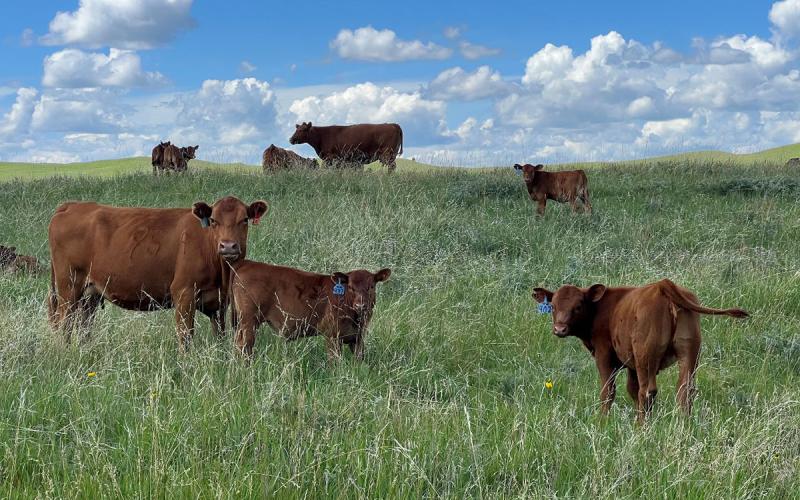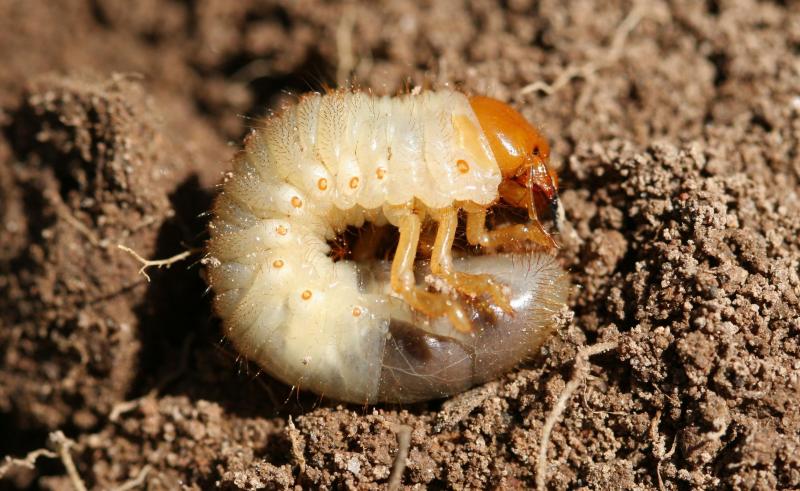
True white grubs, the larvae of June beetles, are considered a significant pest of pasture and rangeland in South Dakota (Figure 1). The grubs feed on grass roots, leaving behind large circular patches of dead grass and bare ground (Figure 2). June beetles have a three-year life cycle, in which they grow underground as grubs, and eventually emerge as adult beetles.
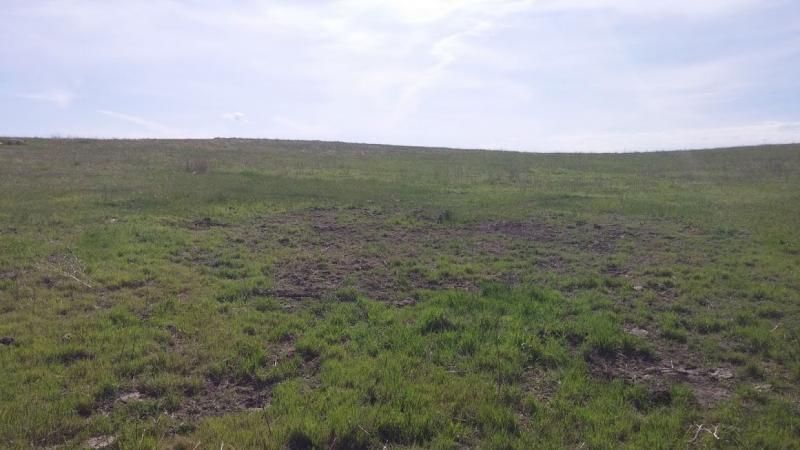
In the spring of 2016, we received reports of large populations of June beetles in Central South Dakota, which indicates the start of a new cycle for the grubs. Based on these reports, it is estimated that 2019 will be the big emergence year if the 2016 adults were successful and their grubs survived the varied South Dakota weather conditions.
About June Beetles
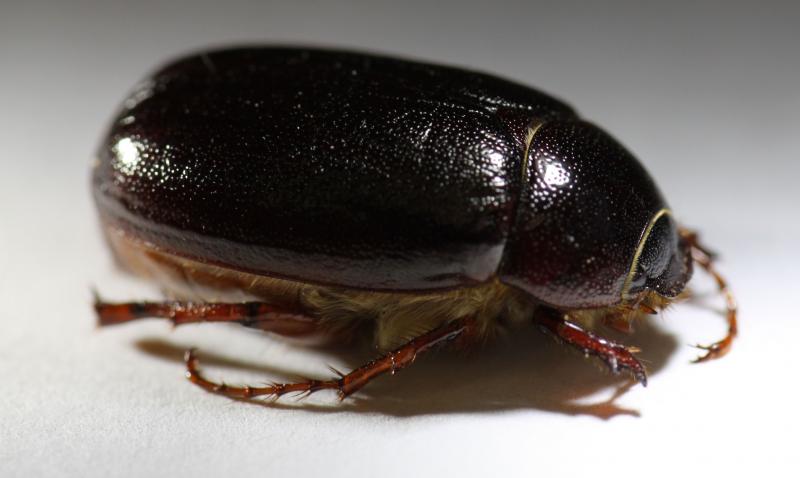
June beetle adults can be ½ to 1 inch long and are light to dark red-brown in color (Figure 3). They typically emerge in May and June and are frequently seen near lights at night. The June beetle larvae, or true white grubs, are white to cream in color and curl into a C-shape when dug up or disturbed. True white grubs can be distinguished from other grubs by the “zipper” pattern of hairs or raster at the end of their bodies (Figure 4).
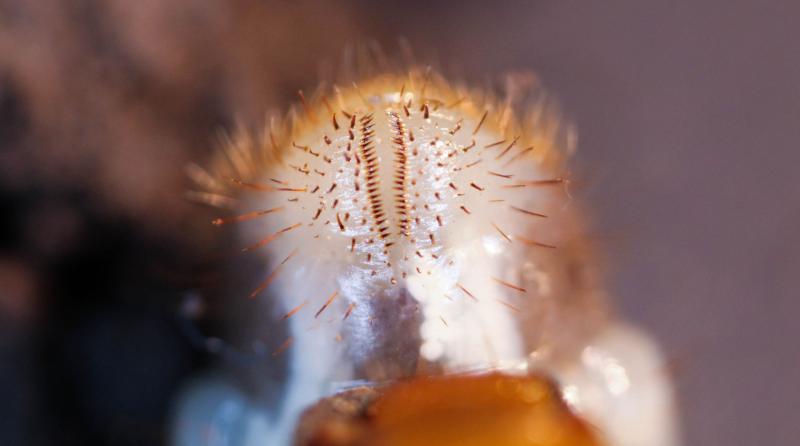
lifecycle and Behavior
In the year that adult June beetles emerge, eggs are laid and the true white grubs hatch and begin feeding. During this time, the grubs are fairly small and feeding injury to the roots is not readily apparent. After the growing season ends, grubs overwinter in the soil. During the second year, the grubs are larger and feeding injury will be more apparent, especially in areas experiencing drought stress. These patches will initially appear as a small area of yellowing or brown grass but will spread outwards from the initial point. The grubs will then overwinter for an additional year. During the third year, the true white grubs are much larger and feeding injury to grass will be readily apparent. The growth of the patches is likely dependent on drought stress as well as the grub density. In July, the grubs pupate, and adults will be present in the soil where they will overwinter. During the following spring, adults will emerge and start the cycle all over again. It is important to note that not all June beetles are on the same cycle, so adult emergences in other years is not uncommon.
Management
As mentioned previously, we are now entering the emergence period for the true white grubs (based on the proposed timeline). Areas that had signs of a white grub infestation last year will likely see large populations of adult beetles this spring and early summer. Although additional signs of feeding injury are unlikely this year, it is potentially the start of another three-year cycle.
There are no insecticides labeled for white grub management in pastures and rangeland. Doing so is considered an illegal activity and will cause more harm than good to the insect community that is present. Currently, the recommendation for dealing with grub injury is to maintain a healthy grassland system and to avoid stressing grass, especially during drought conditions. Reseeding may be an option in circumstances where significant damage has already occurred. When reseeding, be sure to choose plants that are less attractive to June beetles, such as native grasses and forbs. Non-native, cool season grasses can actually promote an infestation and should not be used.

